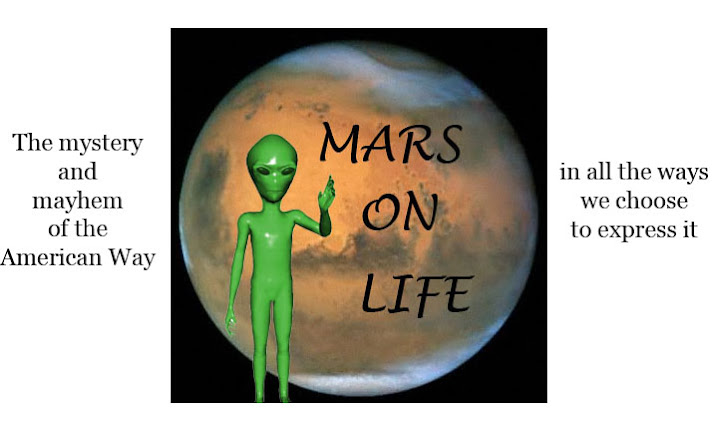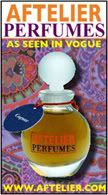Students of fashion iconology have long recognized the importance of the original Ridley Scott "Share the Fantasy" commercial for Chanel No. 5 perfume. Released in 1979, the commercial depicts a tanned woman lounging poolside--where? Beverly Hills? Cannes?--while the shadow of a jumbo jet slices the hot afternoon sky above. The woman lies on her back at the edge of the pool, arching her head back with a sexually suggestive parting of her lips. At the opposite end of the pool, a dark fantasy male dives into the pool and swims its length, rises from the water between the recumbent woman's legs, and vanishes. "I am made of blue sky and golden light, and I will feel this way forever," the female voiceover announces. The commercial was one of five in the "Share the Fantasy" series and is still being discussed today for its blend of richly saturated fantasy and auto-sensuality, a rarity in the 1970s world of sexually direct advertising.
"Share the Fantasy" was arguably the most famous beauty/fashion advertising slogan created during that time period, encompassing not just a fragrant mood but an entire Chanel-branded lifestyle. Its genius lay in acknowledging that the average consumer could no more afford a Chanel wardrobe than she could the advertisement's mansion or airplane, yet the associative desire would be reinforced a nd strengthened by the commercial's message of participation For $250.00 an ounce (or considerably less if one went the eau de toilette route) a consumer could indeed partake of the fantasy.
nd strengthened by the commercial's message of participation For $250.00 an ounce (or considerably less if one went the eau de toilette route) a consumer could indeed partake of the fantasy.
Another slogan from the same time period, although one of lesser cultural impact, accompanied the "Your Dior" pictorial campaign photographed by the late Chris von Wangenheim. The "Your Dior" ads featured the top models of the day in advertisements for Dior-licensed accessories. Gia Carangi was featured in at least of three of them ("Difference is Your Dior"; "Reigning is Your Dior"; "Devastating is Your Dior"), Jerry Hall rode an inflatable shark in a grammatically dubious (or neologistic) one, and in the most famous--"Fetching is Your Dior," Lisa Taylor had her wrist trapped in the jaw of a Doberman.
Some of the Your Dior ads hinted--or in the case of the Doberman ad directly referenced-- a misogynistic and abusive editorial and advertising trend that was hallmark to the late seventies. From 1975 onwards, haute couture could often not be separated from decadence, a nd decadence could not be separated from perversion. Von Wangenheim's work took its place alongside the works of Guy Bourdin and Helmut Newton as ambitiously kinky, often delving into Freudian themes. Fashion editorial was routinely influenced by a deviant European aesthetic that editors and readers accepted with a shrug--anyone who had been to Studio 54 could attest to its commonplace thematic nature.
nd decadence could not be separated from perversion. Von Wangenheim's work took its place alongside the works of Guy Bourdin and Helmut Newton as ambitiously kinky, often delving into Freudian themes. Fashion editorial was routinely influenced by a deviant European aesthetic that editors and readers accepted with a shrug--anyone who had been to Studio 54 could attest to its commonplace thematic nature.
The late 1970s might be said to be an era of depraved chic, of the beauty of torment. The sadomasochistic editorial spreads often approached the Wagnerian as women were strangled, shot, beaten, bruised and otherwise displayed as victims of violent sexual activities or crimes. Often, a tender side was shown, either with the attacker caressing the victim or the victim appearing thankful for the abuse.
The beauty-barbaric ads ran counter to the type of American editorial that had begun in the late sixties and had continued for the following decade. Gone was the innocence of the all-American blonde and her soft, virginal smile; in her place was a darker, moodier model cognizant of her sexual power while at the same time allowing its pernicious defilement. While widely prized in underground specialist communities, images like these had not been used before in fashion photography. The photographs seemed to mock the ready availability of beauty and remove it from a pantheon where it had reigned untouchable and flawless. The European artists acknowledged its expense by making it cheap, by making it both lurid and sublime. In this artistic light beauty was something that could be disposed of and then replaced, massacred and then fondled. In order to be truly beautiful, beauty must be destroyed; only by being savaged was it beautiful in its purest form, as a depreciated commodity.
The extreme self-destructiveness and self-gratification of the era also played a large part in the trend. The Studio 54 era was one of disposable beauty and the cheapening of traditional values for the sake of immediate and temporary pleasure. The dawn of the AIDS era saw a quick change in editorial trend with a closer scrutiny paid towards fashion rather than fetish. The beauty of torment, however, remains a key photographic leitmotif widely available on the Internet.
Image: Lisa Taylor by Chris von Wangenheim, Staley Wise gallery.
Friday, January 4, 2008
Your Dior and the Beauty of Torment
Labels:
Chris von Wangenheim,
Share the Fantasy,
Your Dior
Subscribe to:
Post Comments (Atom)









14 comments:
Great post. I love those ads, but then I'm decadent and perverted, so what would you expect?
That's what I thought as I was composing it: Damn, that WB is going to like this post, pervert that she is.
Brilliant post LLG xx
Thank you kindly, ma'am!
A truly great post!
I found that video!! it's such a good one :)
Share the Fantasy
Really nice post, i love the sexually charged publicity of the 70's.
I just read an interview to Carine R. in self service mag and she speaks about how free those creatives were. Now we live in a really repressive era where we have to be really careful in what or what not to publish. My picture of marilyn monroe with her breast nude was banned by photobucket???!!!
Thanks LK and BB!!
BB, "repressive" is exactly the right word. America has donned her old prim mantle once again.
One of your most enjoyable and informative yet. I had never heard of these Chanel nor these Dior ads before.
DCB.
I do think it was a fair progression from the flower children of the 60s (though I'd prefer to be a part of that decade, and the reason boils down to one word: Beatles).
That said, I love the saturated blues of the first ad.
And PS: Your blog is brilliant!
BFH, I have copies of most of those Dior ads--the Jerry Hall one is totally cool and was my favorite from the series.
Incredible and well-written post. I really enjoy hearing about things like this as I'm only 15 and therefore haven't had much fashion experience. Love the blog as well!
I'm sort of weirdly attracted to that era of decadent excess to the point of destruction.... It seems that this is the case with all eras on the eve of crisis be it WW1/WW2/Aids.....
Thank you Helmut Newton!
Like Susie, perhaps, I am both repulsed and attracted...
to me that era is the essence of what the 'glamour' word mean. these were the days when artists celebrated mature sexuality, wildness, escapism and eroticism of human nature. this was all about fantasies and dreams, even though very often these fantasies appeared dangerous and dark. i love gia's images, i think her face totally captures all that - she's total flesh, attractive, wild, dangerous and sexy.
comparing to these tom ford's gucci and d&g imagery look at least strained.
guy bourdin is such an inspiration!
Post a Comment